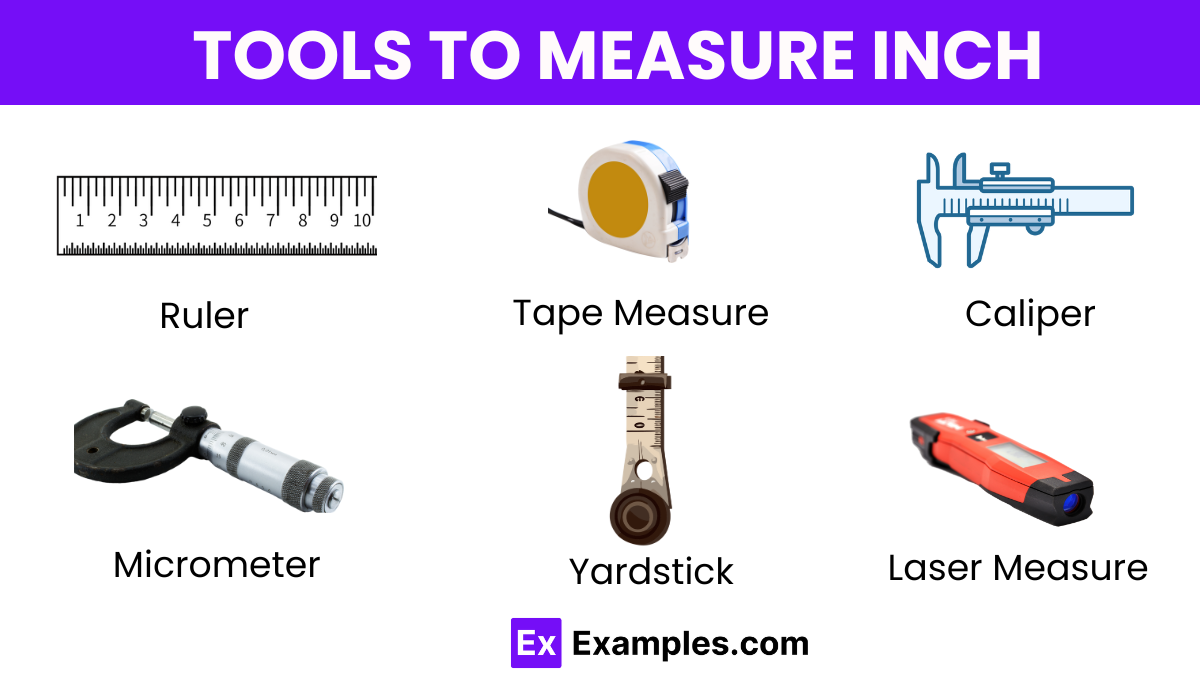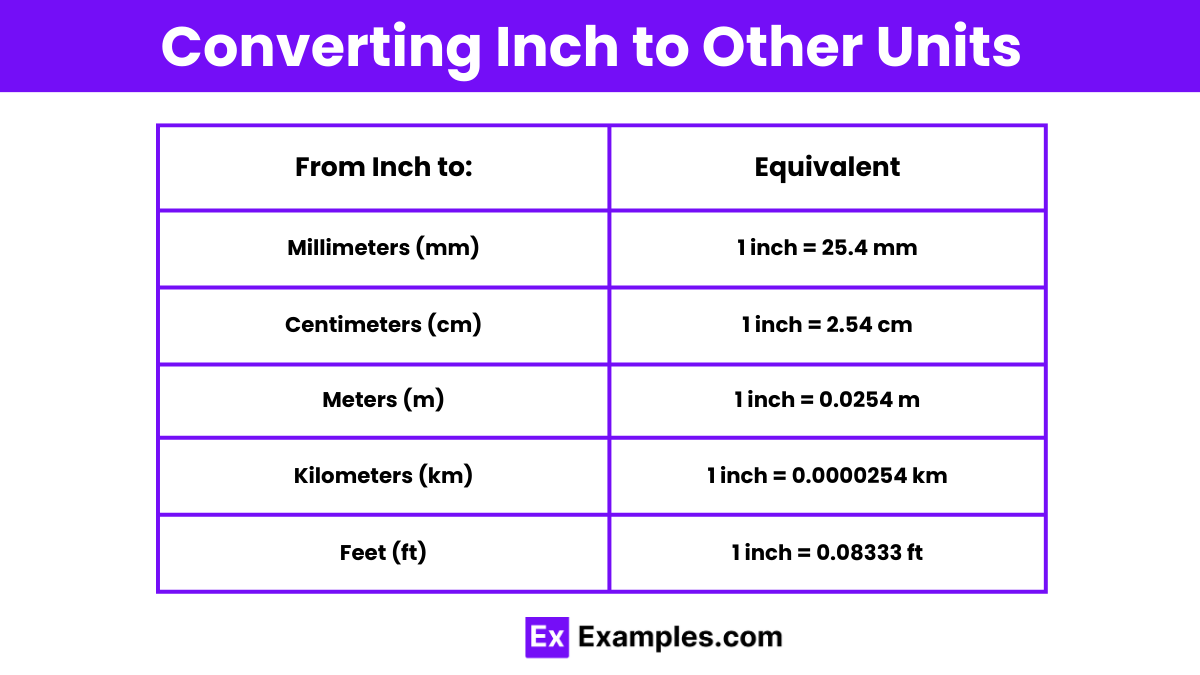What is the equivalent of 10 inches in centimeters?
25.4 cm
20 cm
30 cm
40 cm


The inch, a small yet mighty unit of measurement, plays a fundamental role in numerous aspects of daily life and precise scientific work. Originating from the width of a human thumb, it has been standardized over centuries and is now crucial for engineering, crafting, and digital displays. This guide explores the inch in all its glory—from its historical roots to its practical applications in today’s technology-driven world. Dive into the intricate world of inches to discover its pivotal importance.
An inch is a unit of length in the Imperial and United States customary systems, measuring exactly 2.54 centimeters. Historically based on the width of a human thumb, it is now a standardized length used globally. Essential in construction, manufacturing, and technology, inches are integral for specifying screen sizes, dimensions in architecture, and much more. This unit’s versatility makes it indispensable in many fields, bridging traditional measurements with modern needs in both practical and digital realms.

Measuring an inch accurately is crucial for various applications from crafting to construction. Here are eight tools that are commonly used to measure an inch:
These tools cater to different needs, from home DIY projects to professional engineering tasks, ensuring precise measurements in inches for various applications.

Below is a straightforward table that illustrates how to convert inches into other commonly used units of measurement for length:
| From Inch to: | Equivalent |
|---|---|
| Millimeters (mm) | 1 inch = 25.4 mm |
| Centimeters (cm) | 1 inch = 2.54 cm |
| Meters (m) | 1 inch = 0.0254 m |
| Kilometers (km) | 1 inch = 0.0000254 km |
| Feet (ft) | 1 inch = 0.08333 ft |
| Yards (yd) | 1 inch = 0.02778 yd |
| Miles (mi) | 1 inch = 0.00001578 mi |
| Nautical Miles (nmi) | 1 inch = 0.0000137 nmi |
This table provides a clear and concise reference for converting inches to various other measurements, from very small scales like millimeters to large units such as mile, using precise and rounded conversion factors.
Here are the conversions from inches to various other units of length, presented in a clear and straightforward format:
1 inch = 25.4 millimeters.
Multiply the inch value by 25.4 to convert to millimeter.
Example: 2 in is 2 x 25.4 = 50.8 mm.
1 inch = 2.54 centimeters.
Multiply the inch value by 2.54 to convert to centimeter.
Example: 3 in equals 3 x 2.54 = 7.62 cm.
1 inch = 0.0254 meters.
Multiply the inch value by 0.0254 to convert to meter.
Example: 0.5 in is 0.5 x 0.0254 = 0.0127 m.
1 inch = 0.0000254 kilometers.
Multiply the inch value by 0.0000254 to convert to kilometer.
Example: 100 in is 100 x 0.0000254 = 0.00254 km.
1 inch = 0.08333 feet.
Multiply the inch value by 0.08333 to convert to feet.
Example: 12 in equals 12 x 0.08333 = 1 foot.
1 inch = 0.02778 yards.
Multiply the inch value by 0.02778 to convert to yards.
Example: 36 in is 36 x 0.02778 = 1 yard.
1 inch = 0.00001578 miles.
Multiply the inch value by 0.00001578 to convert to miles.
Example: 63,360 in is 63,360 x 0.00001578 = 1 mile.
1 inch = 0.0000137 nautical miles.
Multiply the inch value by 0.0000137 to convert to nautical miles.
Example: 72,960 in is 72,960 x 0.0000137 = 1 nautical mile.
These conversions provide an easy reference for how distances measured in inches can be converted to a variety of other measurement units, applicable in different scenarios.

The inch is a fundamental unit of measurement used extensively across various fields. Here are ten primary uses of the inch:
These uses highlight the inch’s versatility as a measurement standard, integral to professional practices and daily activities alike.
One inch visually represents the top of a standard thumb, from the tip to the first joint. It’s also about the size of a U.S. quarter’s diameter. This small measurement serves as a quick visual benchmark for estimating small lengths and is commonly depicted on rulers for precision.
On a ruler, a 1/2 inch marking is found halfway between any two whole inch markings. It is one of the larger lines on a standard inch ruler, usually marked distinctly to allow for easy readability. It’s essential for precise measurements in crafting, building, and more.
To divide an inch, use the smaller markings on a ruler; each inch is typically divided into 16 or 32 equal parts. For more precise projects, some specialty rulers may divide an inch into 64ths. This division helps in detailed measurements necessary in engineering and detailed crafts.
Common items that approximate one inch in length include the diameter of a quarter, the width of a standard paperclip, or the size of a large button. These everyday objects can be used for quick measurements when a ruler is not available.
Typically, one inch on an adult’s finger corresponds roughly to the width of the largest part of the thumb, which is about one thumb’s width. This rough estimate provides a convenient measure during quick or informal tasks when precise tools are not at hand.
Text prompt
Add Tone
10 Examples of Public speaking
20 Examples of Gas lighting
What is the equivalent of 10 inches in centimeters?
25.4 cm
20 cm
30 cm
40 cm
If a rectangular object is 5 inches wide and 12 inches long, what is its area in square inches?
60 square inches
45 square inches
50 square inches
55 square inches
How many inches are there in 1 meter?
40 inches
39.37 inches
36 inches
41 inches
A piece of ribbon is 18 inches long. If it is cut into 3 equal pieces, how long is each piece?
3 inches
4 inches
5 inches
6 inches
If a book is 8 inches tall and 6 inches wide, what is the perimeter of the book?
24 inches
28 inches
26 inches
30 inches
Convert 15 inches to feet.
1.25 feet
1.5 feet
1 foot
2 feet
A desk measures 3 feet in length. How many inches long is the desk?
36 inches
37 inches
38 inches
39 inches
If a window is 24 inches wide and 36 inches tall, what is the area of the window in square inches?
655
720 square inches
864 square inches
972
A piece of wood is 7 feet long. Convert this length into inches.
84 inches
70 inches
78 inches
90 inches
What is the circumference of a circle with a diameter of 10 inches?
31.4 inches
20 inches
25.1 inches
15.7 inches
Before you leave, take our quick quiz to enhance your learning!

